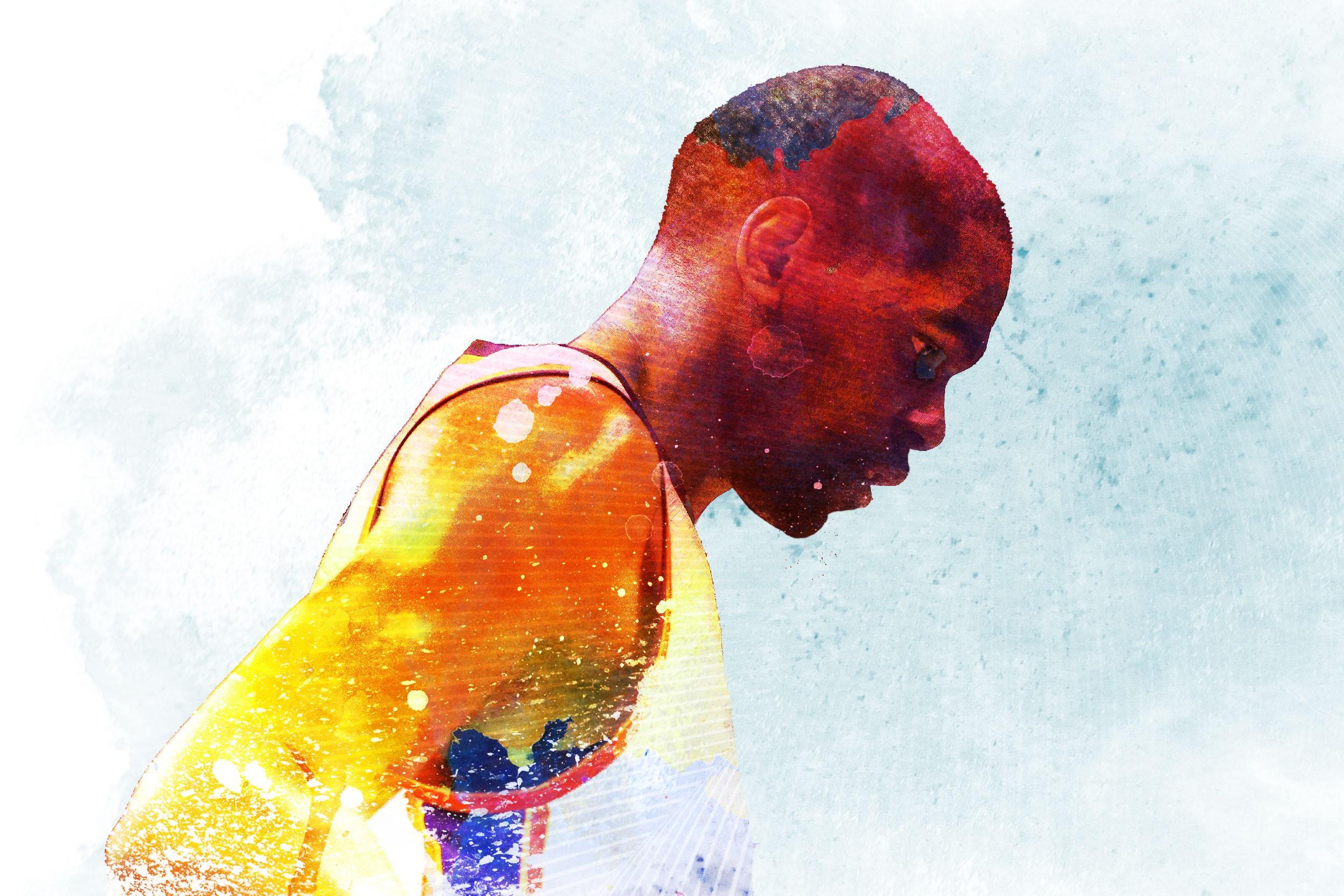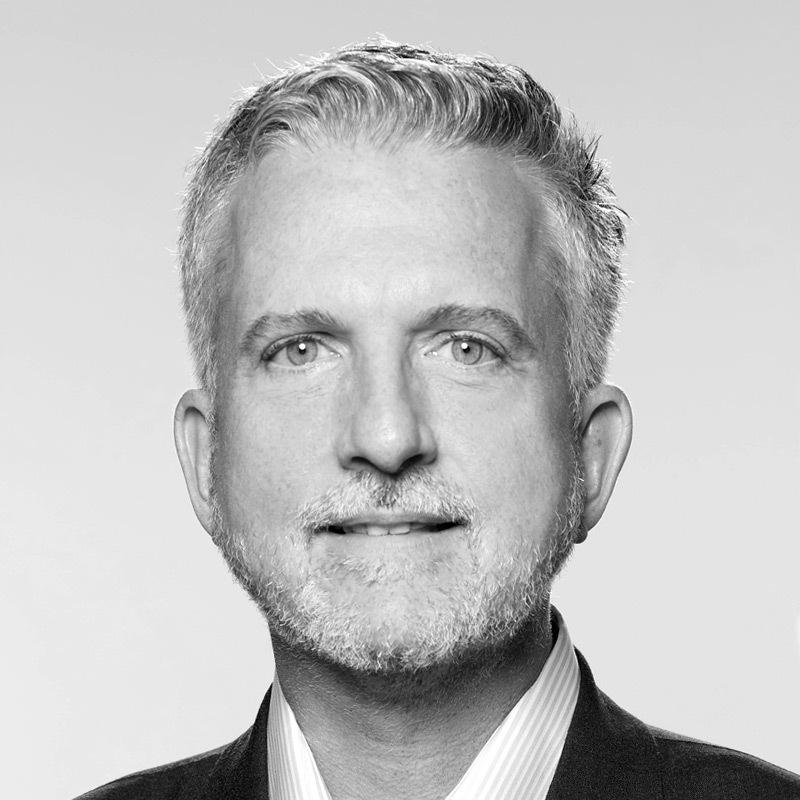
I kept thinking about Kevin Durant during Game 1 of the NBA Finals, if only because it feels like we already HAD the Finals.
Earlier this week, Durant came as close as you could come to winning a playoff series without actually winning it. Now he’s watching the Finals on TV like everyone else, and he’s probably wondering things like, “Why would anyone think they can win a title with J.R. Smith playing 36 minutes a game?”; “Is the East really THAT bad?”; and “Why is Stephen A. Smith on TV this much?” just like anyone else. But those last three Warriors-Thunder games have to be haunting him.
This seems like a good time to mention that Durant doesn’t resemble anyone who ever played basketball. God made him 7 feet tall with Freddy Krueger arms, loping strides, 25-foot range, an effortless handle and the quickest release of any forward since Bernard King. The number nerds hail him as one of the most efficient shooters ever, someone who could finish his career within hollering distance of the 50–40–90 Club. The eye testers rave about his A-list athleticism, maybe not on the hallowed level of LeBron and Westbrook, but one notch below. And he’s a smart player, even if his team hasn’t always been that smart. He’s like George Gervin crossed with Tracy McGrady crossed with Dirk Nowitzki crossed with an alien. Assuming he stays healthy, we can count on remembering him as one of the five best forwards ever.
After nine seasons, it’s almost a fluke that Durant has appeared in only one Finals. This year was his best possible chance. In basketball, the right playoff team almost always prevails in a series. We vividly remember the exceptions — the 2013 Spurs, the 1981 Sixers, the 2002 Kings, the 1988 Pistons, the 2010 Celtics (for me, anyway). But we could never know how it feels to be part of the exception. Isiah’s Pistons turned their collective pain into fuel for back-to-back titles, but they needed a divisive trade (Adrian Dantley for Mark Aguirre) to get rolling. Pop’s Spurs and Erving’s Sixers vanquished their demons by beating the same rival one year later. Garnett’s Celtics couldn’t defeat Father Time. Webber’s Kings never recovered from coming that close and falling short. And OKC … well, Durant’s free agency creates a different wrinkle.
Everyone believes that Durant will sign a two-year extension with an opt-out clause that will kick in next summer; that’s when the NBA’s salary cap climbs to Star Wars–budget levels. But Durant also broke his foot two seasons ago, returned too quickly and underwent two more surgeries on that same foot. He looked healthy last season, but given the NBA’s history of stars and feet, you have to admit, signing a short-term deal feels risky even if he has a completed max contract and a mammoth Nike deal to cushion him (more on that Nike deal later). A one-year extension also creates an on-steroids version of the same “Where is KD going?” bullshit that kept swirling for an entire year. It’s just more uncertainty, more questions, more speculation, more stuff that Durant openly despises.
And then there’s this …
For the rest of this decade, any superstar has a better chance of making the Finals in the East. The West has Golden State, San Antonio, OKC (for now), the star-crossed Clippers, the savvy Blazers and the precocious T-Wolves lurking like Arya Stark. That’s a murderers’ row. The East has Cleveland (FYI: Year 14 for LeBron next season), Boston’s Collection of Awesome Assets That Can’t Translate to an Actual Contender Yet, Whatever Toronto Is, Whatever Atlanta Was, Whatever Orlando and Milwaukee Might End Up Being, Whatever Pat Riley Might Have up His Sleeve and that’s about it. (Sorry, Knicks fans.) You want an easier road to the title, go East. Or sign with the Warriors.
Durant knows this. I promise you. He hasn’t made the Finals since 2012 for a variety of reasons: injuries, cheap owners, shaky coaching, bad luck, a stacked conference, and one dreadfully short-sighted trade (that’s becoming less and less dreadful as Steven Adams blossoms into a Kiwi warrior, but still). You can excuse all of those things and easily land at the following place: We should have won at least one title, it’s amazing that we didn’t, I can’t give up on this team yet. Admirable and understandable, especially for someone as loyal to fans and teammates as Durant has been.

Read more about Kevin Durant’s pending free agency on The Ringer:

But what percentage of that 2016 Western finals result came down to Golden State’s true greatness, and what percentage came down to OKC repeatedly melting down, playing hero ball, losing its composure, playing sloppy defense, getting submarined by Westbrook’s occasional recklessness and Durant’s horrific Game 6 shooting, and basically looking like the illegitimate son of the Drexler-era Blazers? You know, the superathletic, superstacked contender that could never quite stay out of its own way? Is there some Malone-and-Stockton potential here? Always great, but never quite great enough?
Remember, Oklahoma City underachieved all season, played one stupendous two-week stretch of basketball, then went right back to underachieving. As recently as Game 4 of the San Antonio series, as the OKC dudes sniped at each other in the third quarter with their season slipping away, it definitely felt like “The Decision II: Kevin Durant” was suddenly in play. (Someone get ahold of Jim Gray!) The man had other ideas, dropping 29 in the second half to single-handedly save the Thunder’s season. It’s the most important half he’s ever played.
Something clicked for the Thunder that night that seemed like it might carry over for good. They started moving the ball better, crashing the boards, attacking the rim, sticking up for each other. Instead of getting snippy, they were putting so many arms around so many shoulders that Tim Duncan probably felt jealous. When OKC dispatched San Antonio and won three of the first four against Golden State, I, like everyone else, assumed the Thunder were headed for rings and champagne showers and Jimmy Kimmel appearances.
What I loved most about those two weeks of real brilliance, other than their stupefying athleticism and old-school bully-ball routine around the rim: Billy Donovan finally tapped into KD’s two-way potential. Even if Durant wasn’t shooting the lights out, watching him run the offense on one end while protecting the rim AND defending everyone from Curry to Draymond was simply a revelation. It was everything I ever wanted. My biggest Durant-related regret these past few seasons: His coaches never unleashed this 7-foot superfreak as a devastating two-way small-ball weapon. Think how creatively the Patriots use Rob Gronkowski. Is he a receiver? A tight end? A blocker? What’s he doing on this down? Miami unlocked LeBron that way in 2012 and 2013, when he won two titles and 27 straight and peaked as the love child that Bird and Magic never had. Nobody had unlocked Durant that way. Not until those last few weeks.
Then again, Donovan knew he couldn’t fully commit to running his offense through Durant until Westbrook accepted being 1996 Pippen or 2013 Wade … and that was never happening. There was always a gentle tug-of-war between KD and Russ, never contentious, never destructive — but you could always feel it. Somewhere between 2014 and last month, it became fair to wonder whether Durant and Westbrook needed their own teams. After those first four Golden State games, everyone stopped wondering. Oklahoma City had finally and belatedly erupted into a title team. They were just too talented, despite their warts. Kevin Durant would be crazy to leave.
For the first time, Thunder fans started to exhale. Their boys nearly won Game 5 and carried themselves, even in defeat, like a team that was going home to close out the Warriors and turn them into the 18–1 Patriots. And I think that’s what was supposed to happen. Right until Klay and Steph drained an astonishing 17 threes to stave them off.
I repeat … 17 THREES!!!!
At least 10 different times during Game 6, it felt like Oklahoma City was one play away from blowing it open and winning by 15 or more. And every time, one of the Warriors (usually Klay) made another ludicrous play. Had Game 6 been the last 15 minutes of a sports movie, the director would have asked the crew, “Wait, should we tone down these crazy fucking shots that Klay is making? Is this too unrealistic?” And the crew would have said, “Yes, let’s tone it down.” Game 6 was only missing Above the Rim’s 9-foot baskets and South Bend Central’s coach botching crunch time instead of Billy Donovan.
And that’s how Oklahoma City missed the Finals — because a historically great team dug deep and turned a close-out game into a game of H-O-R-S-E. Game 6 has already earned a permanent spot on the short list of historic WTF Playoff Games, right there with Game 5 of ’87 Celts-Pistons, Game 7 of ’00 Blazers-Lakers, Game 5 of ’07 Pistons-Cavs, Game 1 of ’95 Magic-Rockets, Game 6 of ’13 Heat-Spurs, and a few others that live forever on NBA TV. I thought OKC would have beaten Cleveland. We’ll never know.
On a personal note, I love basketball more than I love just about everything. After 40-plus years of following the NBA, part of me wondered if the league had run out of ways to thrill me. But that shooting barrage was like nothing I ever imagined. My God. What league are we watching? Where are we going? Was it an utter fluke that the greatest shooter ever and one of the seven greatest shooters ever somehow landed on the SAME FREAKING TEAM in a 30-team league? Or is the sport headed for a generation of Stephs and Klays?
I spent Sunday night and Monday morning mulling those questions. Gradually, I drifted back to Durant, and only because his future is more interesting than our Finals matchup. (Sorry, Cleveland.) Should KD leave and lock down those extra money years? Should he jump to the East and build his own contender? Should he sign with the Warriors? Should he run it back with Westbrook and the boys one more time?

We can’t ignore one additional motivation for Durant’s summer that almost feels petty to mention. But screw it. After winning the 2014 MVP and giving a heartwarming speech that inspired a shockingly decent Lifetime movie, Durant signed a sneaker deal with Nike that could generate as much as $300 million for him. You know what happened next: He injured his foot and missed nearly all of the 2014–15 season right as Curry’s popularity skyrocketed to Jordanesque levels for Under Armour. (Even worse for Nike — it HAD Curry and blew it.) One year later, Kobe’s goofy farewell tour overshadowed Durant’s excellent comeback season, as did Golden State’s impossible 73–9 feat, as did Curry winning another MVP and becoming the modern-day Pied Piper. LeBron remained LeBron — Nike’s biggest star, its franchise guy in every respect. Even Westbrook’s polarizing brilliance swallowed up Durant from time to time. Nobody was having “LeBron or Durant?” arguments anymore; we didn’t even know if Kevin Durant was the best guy on his own team.
In February 2014, Durant and LeBron had the best-selling shoes among all NBA players. Two years later, it’s all about Under Armour (Curry) vs. Nike (LeBron and Jordan Brand); if you surf around, you can’t find Durant in any story about top-selling NBA sneakers. His representatives at Roc Nation know it; so does Nike. And if you think they haven’t mentioned this to him, repeatedly, you’re bonkers. It helps their cause that Durant doesn’t just want to be one of the greatest; he wants to be THE greatest. He’s as competitive as any of these guys.
You might remember LeBron successfully reinventing himself in Miami in 2010, then again in Cleveland in 2014. There’s something to be said for a fresh start — it’s a selling point, a fresh narrative that everyone can pound into the ground. Durant returning to OKC won’t help Nike in its holy war against Under Armour unless he wins a title. But Durant building his own Eastern contender in Miami, Boston or Washington, or grabbing the torch from Kobe in Los Angeles for the Lakers? Now that would grab eyeballs and sell sneakers. And Nike has 300 million reasons to hope it happens.
We’ll see how much sway Nike has, because if it were up to the company, he’d be gone already. Meanwhile, Kevin Durant needs to determine whether Oklahoma City’s narrow defeat was a fluke … or something more ominous. He has four weeks. And I hate to say it, but all four of those weeks will probably be more dramatic than the 2016 NBA Finals.

